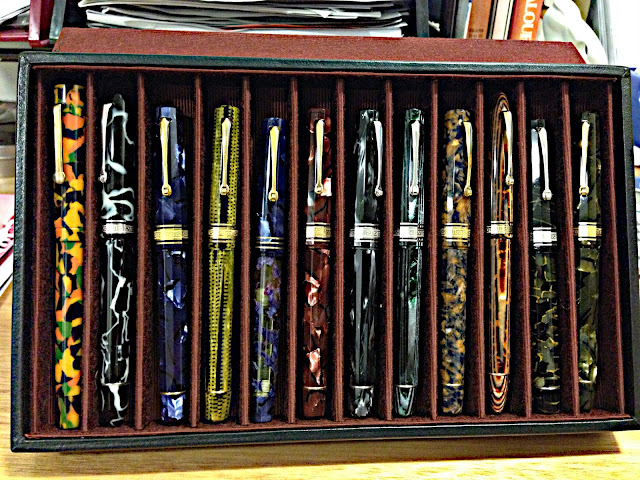Once upon a time, (June 15, 1925 to be precise) in Via Degli Orbi (now Via Turati) Armando Simoni created a fountain pen company he called OMAS (Officina Meccanica Armando Simoni). 

This story, unfortunately, is not a fairy story. Certainly Armando's dream grew. Over nine decades his creation took shape and evolved into a modern, creative, artisan-based business that continued to produce fountain pens true to the vision of its founder .
In 1927 Armando registered his first OMAS patents. He designed the now iconic twelve-sided (facetted) fountain pen in the 1932 with the release of the OMAS lever-filled Extra:
... and his company, OMAS continued to produce world-renowned artisan fountain pens during and beyond his lifetime including the brilliant 361 from 1948 which created a nib that could produce three different types of writing: flexible, calligraphic and rigid:
the innovative and ergonomic 360 in the late 1980s
and the omnipresent celluloids: Arco, Wilde; Arlecchino and more.
On the nib front too, OMAS and Armando were supreme. Armando produced his first extra flessible nib in 1918 - before OMAS was even formally a company; and the "Extra Flessible" nibs of today remain amongst the best modern flex nibs available.
OMAS pens evoke a time when quality artisanship retained value and success. For 90 years Armando Simoni's company served as a beacon of great fountain pen design and innovation.
As I said, this story, is not a fairy story. In 2016 (and probably for some years prior) the state of OMAS finances have sadly awoken OMAS and us, its users, to the fact that there comes a time when we must wake from every dream and carry on. So it has become that the OMAS of extra flessible nibs, ebonite feeds, and celluloid; the piston-filling purveyors of quillidyllicism has come to an end. No más OMAS
My first Omas was a 360 Magnum. I fell in love. It was different, innovative, and extraordinarily fun to hold and write with. The nib virtually danced across the pages.  The 360 peaked my interest and soon I discovered OMAS celluloid.
The 360 peaked my interest and soon I discovered OMAS celluloid.
 The 360 peaked my interest and soon I discovered OMAS celluloid.
The 360 peaked my interest and soon I discovered OMAS celluloid.
After that, I was hooked!
I do not want to spend time here examining why what has happened to OMAS has happened. Others have examined that who have greater knowledge than I. OMAS . If you have read this far however, I thought now would be a better time to share a few of the photographs of those pens currently residing with me (all my OMAS pens; but not all my OMAS pens) so that together we can remember and embrace the extraordinary pleasure that the OMAS brand has delivered to quillophyles for 9 decades.
One final thing: as I suggested earlier, this blog is a tribute to OMAS, not a vale. While OMAS may not produce any new pens, the OMAS brand is still very much alive.
I am in the privileged position of being the custodian of quite a few examples of this wonderful brand. But they do not belong to me alone (no Jonathan, they're not coming your way!) One of the great things about fountain pens is that they do not need to be another throw-away convenience in a convenience-focused, developed world. I say I am a "custodian" because fountain pens, good fountain pens, last. I have pens much older than my years that write superbly and serve me well (often better than their modern equivalents).
When I can write no more, the OMAS pens now with me will become my daughter's pens. When she passes on, I hope that they will become the instruments of choice to further generations. In this way, the OMAS brand will always continue. So queue the music...










































































































